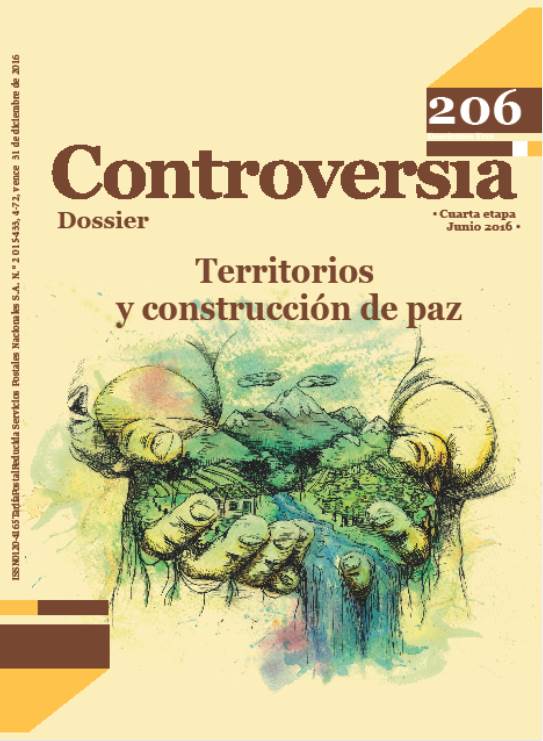Abstract
When the state expands into territories contested by armed non-state actors with the goal of pacifying and integrating them into the broader national framework, the results are hardly the same across space and time. This state expansion will often witness a reduction in violence mirrored by an improvement in order. Quite frequently however, violence will increase as order worsens, thus begging the following question: how is the state able to reclaim control of certain disputed spaces easier than others?
This article is a comparative study of three municipalities in northeast Colombia – Arauca, Arauquita, and Tame - which acted as laboratories for former President Álvaro Uribe’s state expansion campaign beginning in 2002. The former Colombian president selected these three locations, amongst others, to serve as a testing ground for an American counterinsurgency strategy which was designed to expel armed rebels from their havens and to recover this territory back into the national fold. However, whereas the military succeeded in defeating the insurgents in Arauca within five years of this intervention, Arauquita and Tame remain guerrilla strongholds to the present. These case studies provide an effective reference to examine past policies in the hopes that new ones can avoid similarly inconsistent outcomes.
Key Words: Arauca, Arauquita, Tame, State expansion, Counterinsurgency, Guerrilla, Insurgent resistance, Territorial control
EXPANSIÓN ESTATAL, RESISTENCIA INSURGENTE, Y CONTROL TERRITORIAL EN ARAUCA 2002-2010
Cuando el Estado se expande en los territorios en disputa por los grupos al margen de la ley, con el fin de apaciguar e integrarlos en el marco nacional, casi nunca los resultados son iguales a lo largo de tiempo y del espacio. A veces esta expansión estatal reduce la violencia y también la acompañada por un mejoramiento en el orden público. Sin embargo, frecuentemente en muchos casos la violencia aumenta y el orden público empeora, un fenómeno que nos lleva a la siguiente pregunta: ¿cómo se puede reclamar el control del Estado en unas zonas en disputa más fácil que en otras?
Este artículo es un estudio comparado de tres municipios contiguos en el nororiente colombiano – Arauca, Arauquita, y Tame – que sirvieron como los primeros laboratorios para la política contrainsurgente del entonces presidente Álvaro Uribe Velez en el 2002. El ex-mandatorio eligió estos tres sitios, entre otros, para probar la estrategia contrainsurgente concebida en los EEUU, la cual fue diseñada para expulsar a los insurgentes de sus remansos y recuperar este territorio permanentemente. Cabe mencionar, que mientras la fuerza pública colombiana logró derrotar a los insurgentes en Arauca después de cinco años de dicha intervención, Arauquita y Tame siguen siendo bastiones guerrilleros hasta el presente. Estos tres casos proporcionan una buena referencia para evaluar las políticas de ayer, con la esperanza que las próximas podrían evadir los resultados tan inconsistentes.
Palabras Clave: Arauca, Arauquita, Tame, Expansión estatal, Contrainsurgente, Guerrilla, Resistencia insurgente, Control territorial
References
Amnistía Internacional. (2004). Colombia-Un laboratorio de Guerra: Represión y violencia en Arauca. Retrived from http://www.acnur.org/t3/uploads/media/COI_351.pdf
Bakke, K.M., Gallagher Cunningham K. & Seymour L. (2012). A Plague of Initials: Fragmentation, Cohesion, and Infighting in Civil Wars. Perspectives on Politics, 10(2), 265-283.
Ravi, B., Miodownik, D. & Choi, H.J. (2011). Violence and Control in Civil Conflict: Israel, the West Bank, and Gaza. Comparative Politics, 44(1), 61-80.
C. López Hernández (Coord.)(2010) Monografía Político Electoral. Departamento de Arauca 1997 a 2007, Bogotá: Misión de Observación Electoral.
Carroll, L. (2011). Violent Democratization: Social Movements, Elites, and Politics in Colombia’s Rural War Zones, 1984-2008. : South Bend, United States of America: University of Notre Dame Press.
Colletta, N.J. & Cullen, M.L. (2000). The Nexus between Violent Conflict, Social Capital and Social Cohesion: Case Studies from Cambodia and Rwanda., Washington D.C.: World Bank.
Defensoría del Pueblo. (2003). Proyecto Apoyo Defensorial en Las Zonas de Rehabilitación y Consolidación. Primer Informe de Actividades. Retrived from
http://www.defensoria.gov.co/attachment/52/Proyecto%20apoyo%20
defensorial%20de%20las%20zonas%20de%20rehabilitaci%C3%B3n%20y%20consolidaci%C3%B3n.pdf
El Tiempo. (2002, august 2nd). Arauca se inunda de coca. El Tiempo, Retrived from http://www.eltiempo.com/archivo/documento/MAM-1351780
González, F., Bolívar, I. & Vásquez T. (2003). Violencia Política en Colombia. De la nación fragmentada a la construcción del Estado. Bogotá: CINEP.
Granovetter, M. (1985). Economic Action and Social Structure: The Problem of Embeddedness. American Journal of Sociology, 91, 481-510.
Gutiérrez Loaiza, A. (2012). Negociaciones de paz en Colombia, 1982–2009. Un estado del arte. Estudios Políticos, 40, 175-200.
Gutiérrez Lemus, O.J. (2010). Arauca: Espacio, conflicto e institucionalidad. Análisis Político, 69, 3-34.
Gutiérrez-Sanín, F. (2008). Telling the Difference: Guerrillas and Paramilitaries in the Colombian War. Politics Society, 36(3), 3-34.
Humphreys, M. & Weinstein, J. (2006). Handling and Manhandling Civilians in Civil War. American Political Science Review, 100(3), 429-447.
Idler, A. (2012). Exploring Arrangements of Convenience among Violent Nonstate Actors. Perspectives on Terrorism, 6(4-5), 63-84.
“Interview 1.” Personal Interview. Bogotá D.C., 18 Jan. 2016.
“Interview 4.” Personal Interview. Arauca, 20 Jan. 2016.
“Interview 8.” Personal Interview. Arauca, 22 Jan. 2016.
“Interview 12.” Personal Interview. Arauquita, 24 Jan. 2016.
“Interview 13.” Personal Interview. Arauquita, 24 Jan. 2016.
“Interview 14.” Personal Interview. Arauquita, 24 Jan. 2016.
“Interview 15.” Personal Interview. Arauquita, 25 Jan. 2016.
“Interview 16.” Personal Interview. Saravena, 26 Jan. 2016.
“Interview 17.” Personal Interview. Saravena, 26 Jan. 2016.
“Interview 18.” Personal Interview. Saravena, 26 Jan. 2016.
“Interview 19.” Personal Interview. Saravena, 27 Jan. 2016.
“Interview 20.” Personal Interview. Saravena, 27 Jan. 2016.
“Interview 21.” Personal Interview. Saravena, 28 Jan. 2016.
“Interview 22.” Personal Interview. Fortul, 28 Jan. 2016.
“Interview 23.” Personal Interview. Fortul, 28 Jan. 2016.
“Interview 24.” Personal Interview. Saravena, 29 Jan. 2016.
“Interview 25.” Personal Interview. Tame, 30 Jan. 2016.
“Interview 47.” Personal Interview. Bogotá D.C., 26 April 2016.
Kalyvas, S. (2006). The Logic of Violence in Civil War. United Kingdom: Cambridge University Press.
Kline, H.. (2009). Showing Teeth to the Dragons: State-Building by Colombian President Álvaro Uribe Vélez, 2002-2006. Tuscaloosa, United States of America: The University of Alabama Press.
Leal Buitrago, F. (2006). La política de seguridad democrática 2002-2005. Análisis Político, 57, 3-30.
Levitsky, S & Lucan, W. (2013). The Durability of Revolutionary Regimes. Journal of Democracy, 24(3), 5-17.
Peñate, E. (1998). El sendero estratégico del ELN: del idealismo guevarista al clientelismo armado. Documento de Trabajo No. 15. Bogotá: Universidad de Los Andes.
Portes, A. (2010). Economic Sociology: A Systemic Inquiry. Princeton: Princeton University Press.
Portes, A. & Sensenbrenner J. (1993). Embeddedness and Immigration: Notes on the Social Determinants of Economic Action. The American Journal of Sociology, 98(6), 1320-1350.
Raleigh, C. &. Dowd, C. (2013). Governance and Conflict in the Sahel’s ‘Ungoverned Space’. Stability: International Journal of Security & Development, 2(32), 1-17.
Sarbahi, A. (2014). Insurgent Population Ties and the Variation in the Trajectory of Peripheral Civil Wars. Comparative Political Studies, 47(10) 1470-1500.
Sarmiento, L. (2015). Arauca 1983-2015: Fin de un ciclo histórico y transición incierta. Bogotá: Fundación Paz y Reconciliación. Retrived from http://revistacepa.weebly.com/uploads/1/3/3/7/13372958/araucaypetroleolibardosarmiento.pdf
Semana. (January 19 2009). Cómo el Ejército se alió con el ELN en Arauca. Semana. Retrived from http://www.semana.com/nacion/articulo/comoejercito-alio-eln-arauca/99226-3
Staniland, P. (2012). States, Insurgents, and Wartime Political Orders. Perspectives on Politics, 10(2), 243-264.
Staniland, P. (2014). Networks of Rebellion: Explaining Insurgent Cohesion and Collapse. Ithaca, Cornell University Press.
Sweig, J.E. (2002). What Kind of War for Colombia?. Foreign Affairs, 81(5), 122-141.
United States Government Accountability Office. (2011). Security Assistance: Efforts to Secure Colombia’s Caño-Limón-Coveñas Oil Pipeline Have Reduced Attacks, But Challenges Remain. Report to Congressional Requesters (2005)
Vargas, G. (2009). Urban Irregular Warfare and Violence against Civilians: Evidence from a Colombian City. Terrorism and Political Violence, 21, 110-132.
Weinstein, J. (2006). Inside Rebellion: the Politics of Insurgent Violence. United Kingdom: Cambridge University Press.



